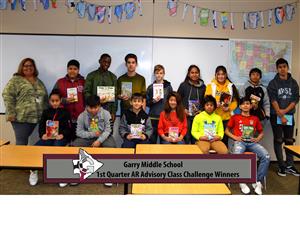- Spokane Public Schools
- Programs & Services
Programs & Services
-
Programs
Elementary Schools
Elementary multilingual English learners (MLs) are placed in their classroom by age. ELD teachers at the elementary level meet with students in grade-level groups. A grade-level ELD pre-test determines need and serves as a benchmark from which to measure growth. The district-adopted curriculum, Reach, is designed for grades K-5 with support for varying levels of language acquisition.
Sixth graders are placed in groups based on the middle school curriculum assessment, Inside. Students take a placement test to determine appropriate placement: Newcomer, Fundamentals 1, Fundamentals 2, Level A, or Level B. Sixth graders who score at the Newcomer level will be referred to the Middle School Newcomer Program for placement.
Middle Schools
Middle school multilingual English learners (MLs) are placed in a grade level by age. The Inside curriculum placement test determines ELD course assignments. This assessment provides teachers with a Lexile reading level and shows where to place the student:
- Newcomer (for students in the pre-emergent stage of language acquisition)
- Fundamentals 1 and 2 (for students in the emergent stage of language acquisition)
- Level A (for students in the intermediate stage of language acquisition)
- Level B (for students in the early fluency stage of language acquisition who have not yet exited the ELD program)
- Level C for students at the advanced fluency stage who have not yet transitioned out of ELD services)
Students who score at the Newcomer level will be referred to the Middle School Newcomer Program for placement. The test is given again each spring to assist in determining program placement for the following school year.

High Schools
High school students are initially placed in a grade level based on the total number of US secondary credits completed. High school students who qualify for ELD services are placed in ELD language arts classes based on the Edge curriculum placement test. The test determines which students are placed in Edge Fundamentals, in Edge Level A, in Edge Level B, and in Edge Level C. Students who score at the Newcomer level will be referred to the High School Newcomer Center for placement. The test is given again each spring to determine placement for the following school year.
ServicesElementary Schools
- Supportive Mainstream- Pull-out: A program used at all elementary schools. The ELD teacher meets with students for 20-30 minute blocks within the regular school day, 1-5 days a week. Wherever daily pull-out is not feasible for all students, ELD teachers prioritize by language acquisition level.
- Supportive Mainstream -Push-in: At some schools, a mainstream classroom teacher has the ELD teacher in their classroom for 30 to 40 minutes to work with MLs in either small groups (for classrooms with a mixture of first-language English speakers and MLs) or whole class (in sheltered instruction classrooms where all students are ELLs).
- Content-Based Sheltered Instruction: Offered by a growing number of schools. MLs are purposefully clustered in select grade levels with a teacher who is dual endorsed in both elementary education and ESL. Students in these classrooms receive support from both the classroom teacher and the ELD teacher.
Middle Schools
- Content-Based Sheltered Instruction: Students who qualify for services based on the WIDA Screener assessment are placed in sheltered grade level courses for English language arts and social studies. The ELD department uses the middle school ELD curriculum, Inside, which adheres to both state standards in English language arts and WIDA standards for English language acquisition
- Accessing Curriculum in Content Areas: For language arts and social studies, access to the content area curriculum is provided through the dual endorsed ESL/content area teacher. For mathematics and science courses, students are placed in classes with highly qualified math and science teachers and receive support from bilingual specialists. In all elective courses for which language is not a particular barrier to instruction (P. E., fine arts, etc.), all MLs are enrolled in the mainstream classroom.
High Schools
- Content-Based Sheltered Instruction: Students who qualify for services based on the WIDA Screener assessment are placed in at least one sheltered grade level course for English language arts and usually a second sheltered class in social studies. In high school, scores on the WIDA Screener and the Edge placement assessment determine how many ELD courses the student takes. The ELD department uses the high school ELD curriculum, Edge, which adheres to both state standards in English language arts and WIDA standards for English language acquisition. All ELD English and ELD Social Studies classes receive graduation credit for English and Social Studies.
- ELD courses are designed to align to the National Geographic CENGAGE Learning curriculum and should improve students’ level of English language proficiency. These courses foster the acquisition of reading, writing, listening, and speaking in English. ELD-only classes are taken in conjunction with ELD English classes and receive elective graduation credit.


